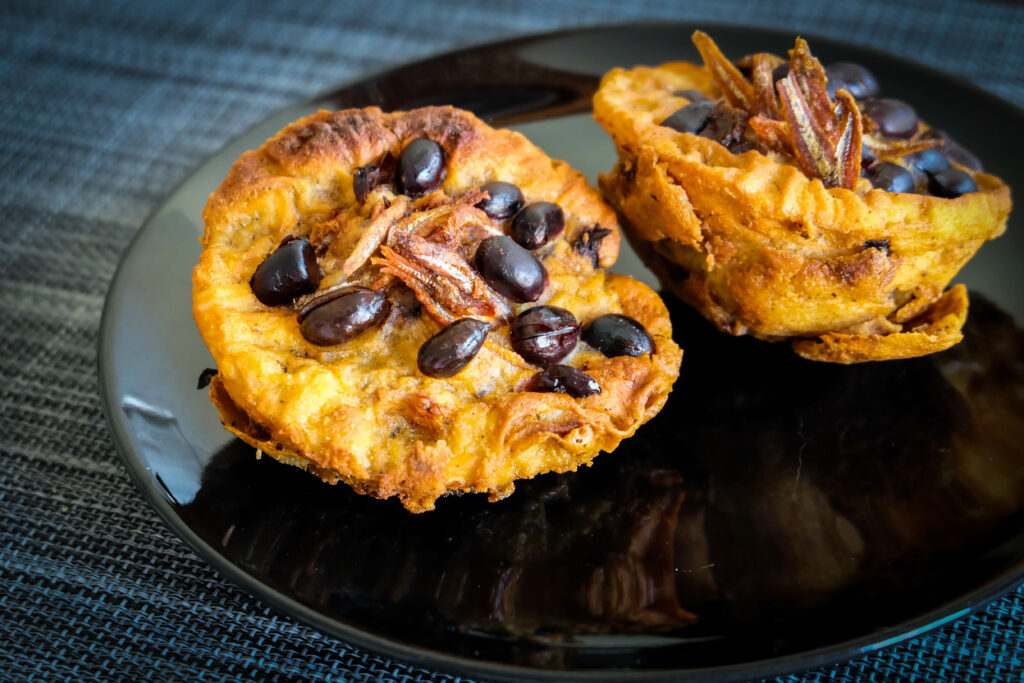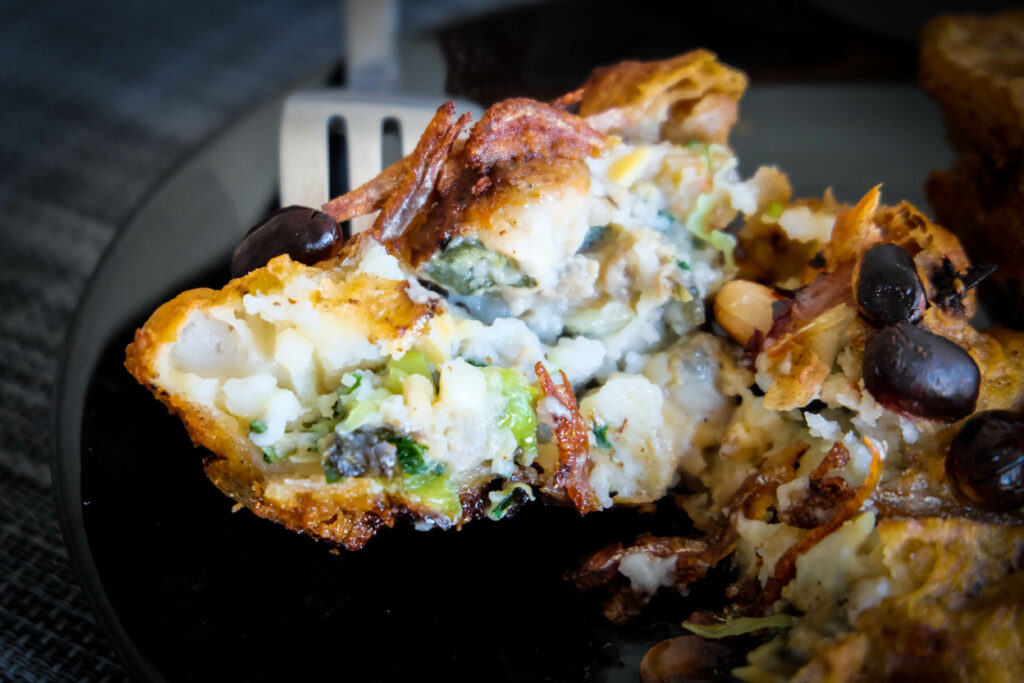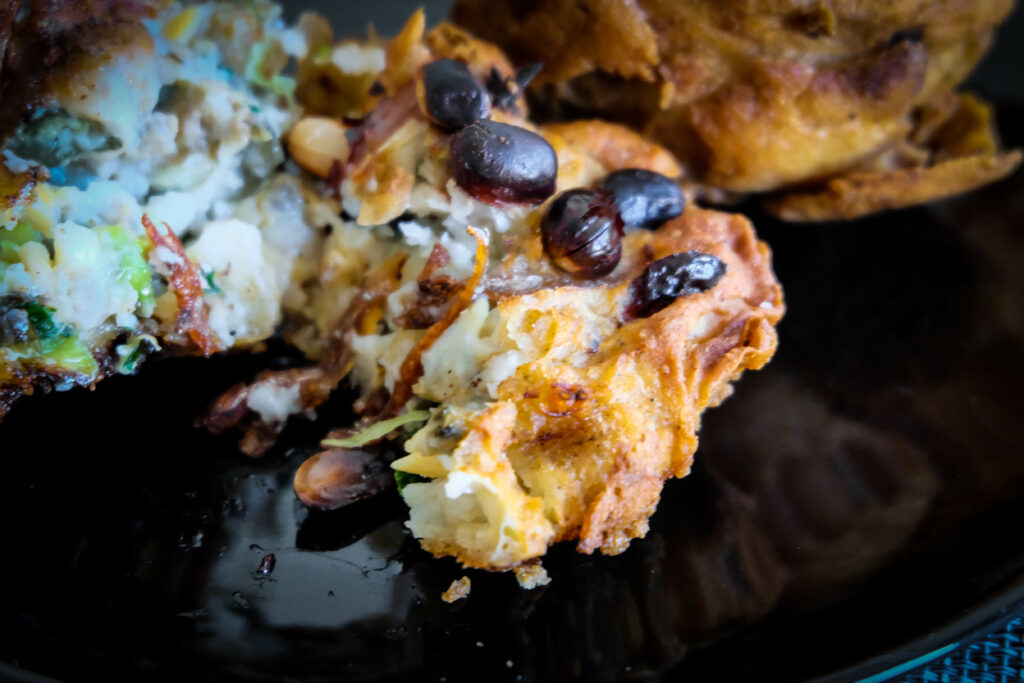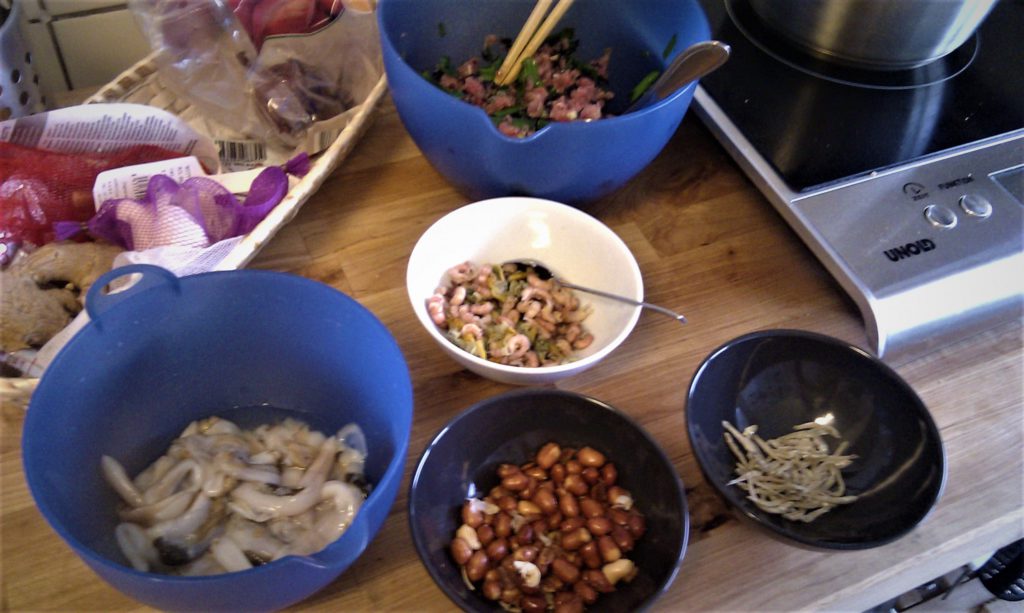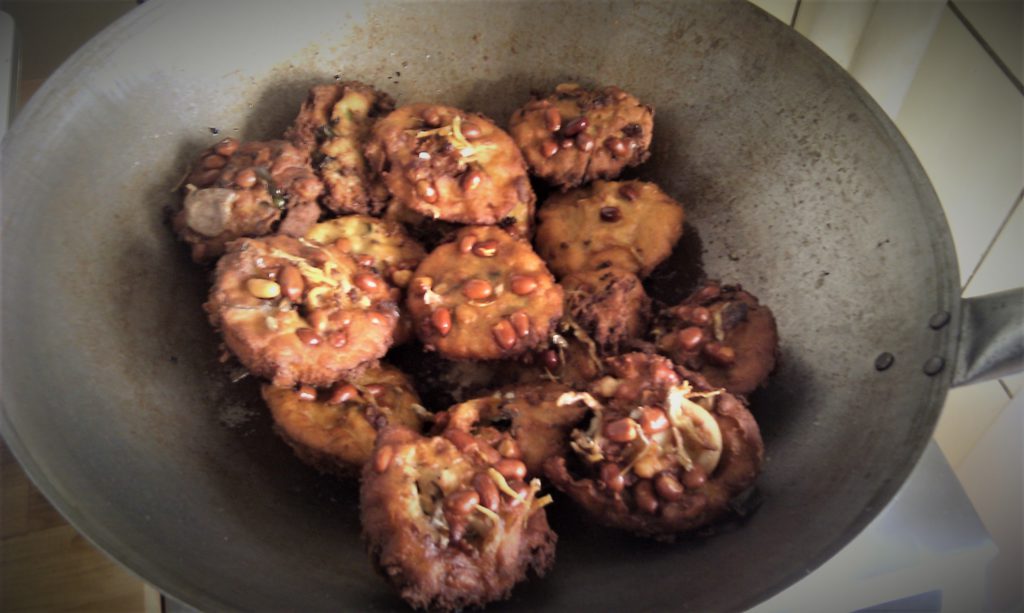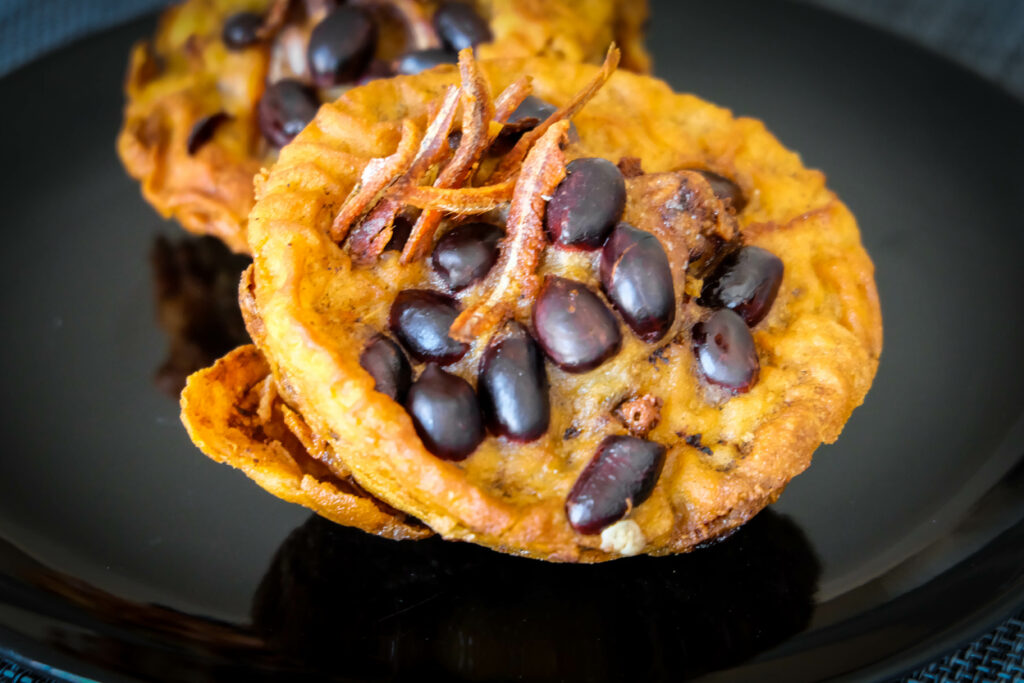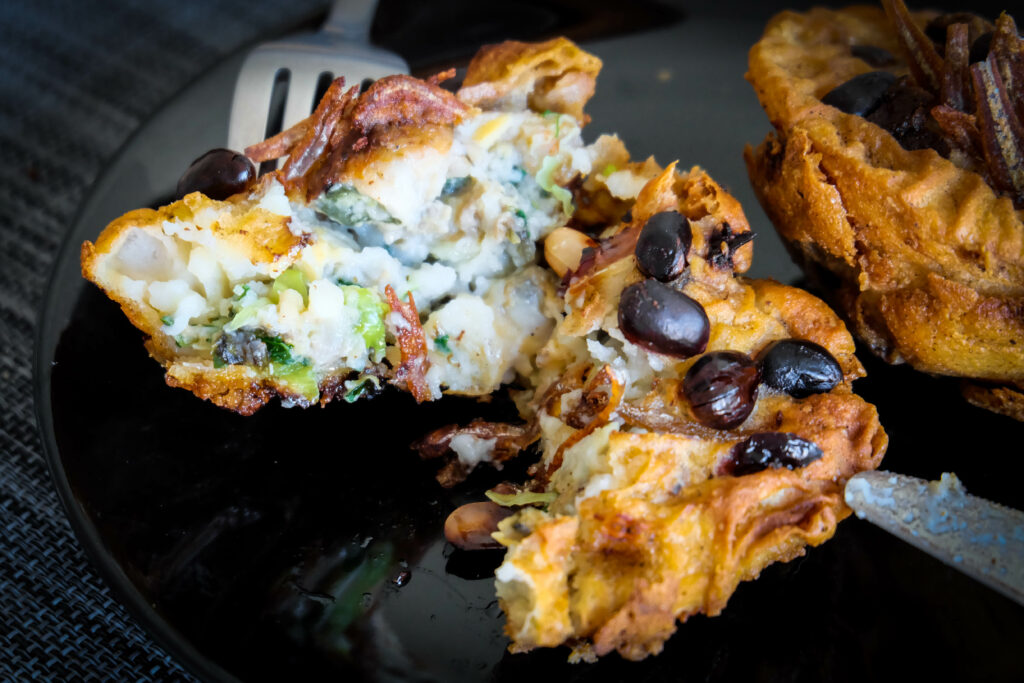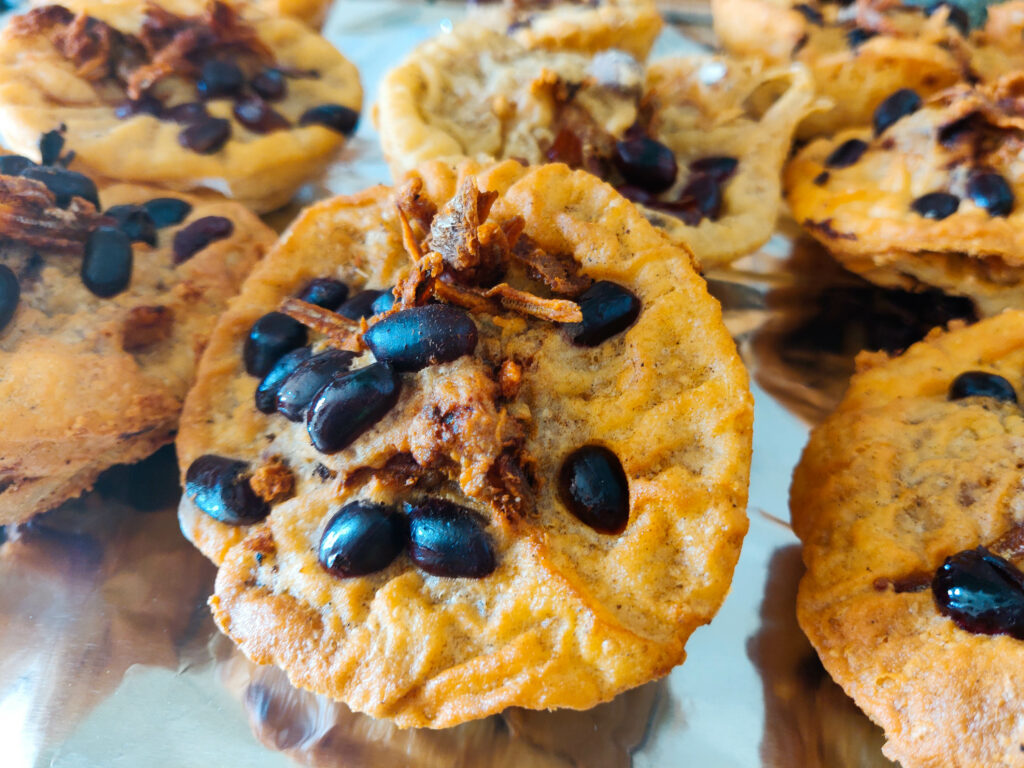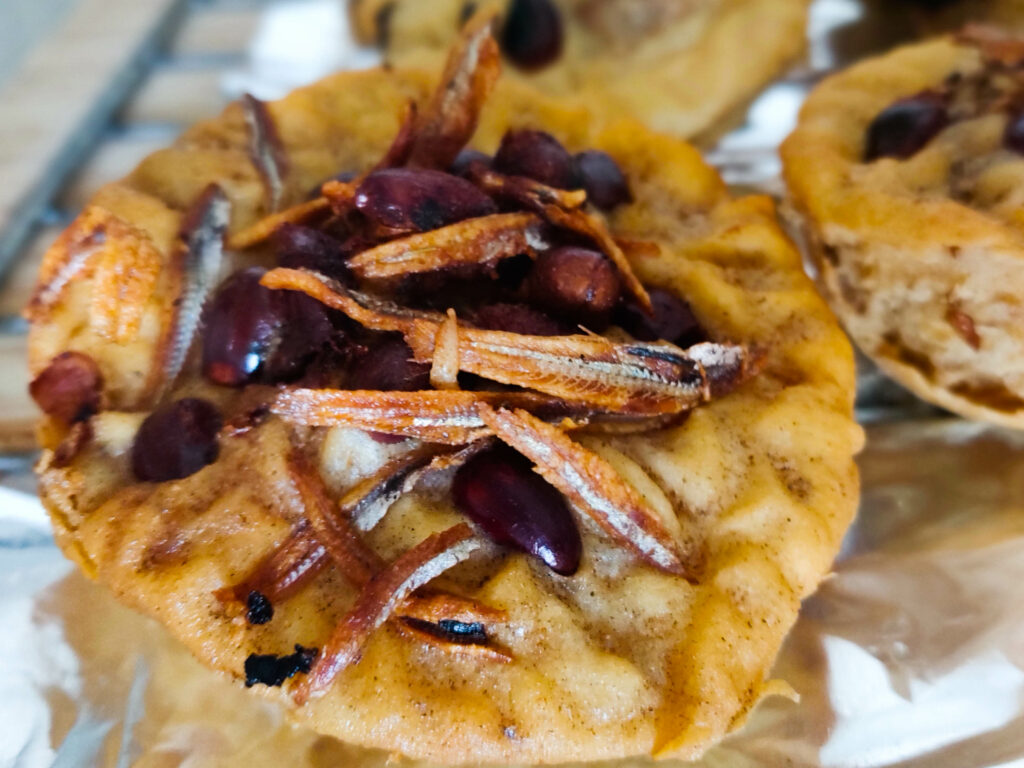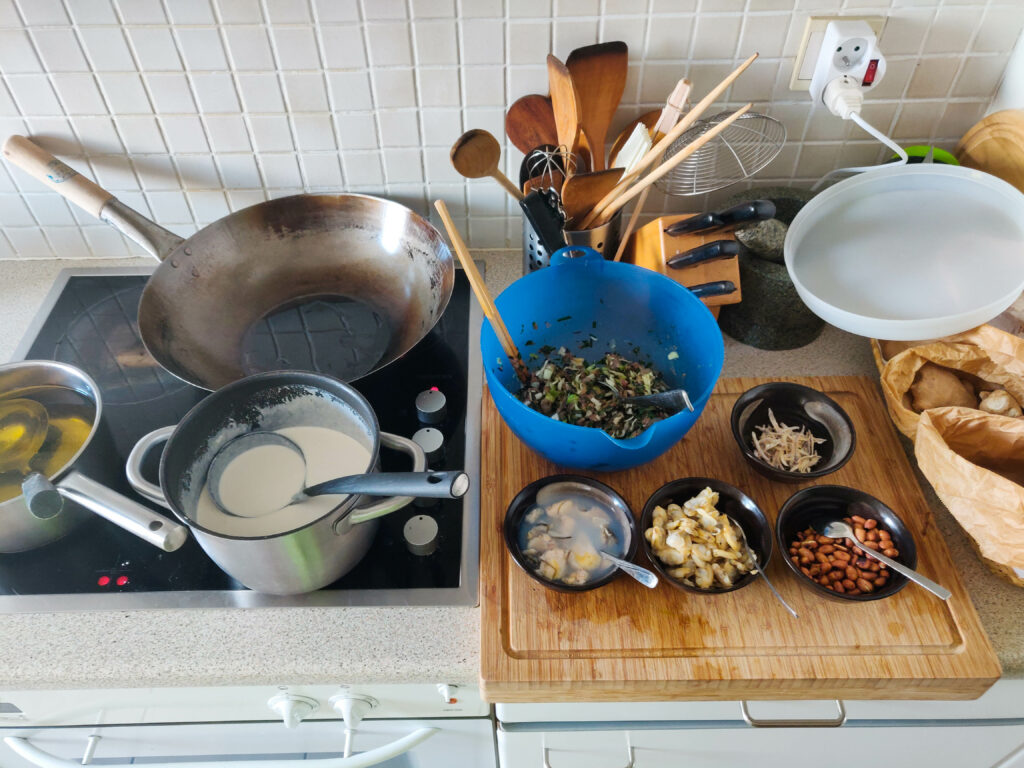Hockchew Clam Fritters 福州蛏饼 are a street food commonly found in Fuzhou, a district in the middle of the coastal region of Fujian Province in China.
Made with a variety of seafood, minced pork and vegetables, Hockchew Clam Fritters are best when freshly fried and accompanied with a big glass of cold beer!

Where is Fuzhou?
Fuzhou is the capital of Fujian province in southern China. The whole of the province is known as “Min” 闽, referring to the pre-sinicised tribes that used to live there. These natives are still living today on the island of Taiwan, which is geographically and culturally part of the realm of Min.
Fujian is divided into three cultural zones, influenced by the level of sinicisation and Han Chinese migration into the realm around 3,000 years ago:
- In the north, Minbei 闽北 is the most sinicised of Fujian, where the Minbei language is closer to Jiangxi languages with which it borders.
- Mindong 闽东 is where Fuzhou is located. It occupies the middle part of the coast and the language descends from Middle Chinese.
- Minnan 闽南, which occupies the south of the province, extends to Taiwan in the east and to Chaozhou in the Guangdong Province in the west is the oldest of the Min tribes. The language descends directly from Old Chinese and contains many elements of pre-Sinic Austronesian languages. It is the only living Chinese language with features from three thousand years ago.
Note that all three language groups are not mutually intelligible. The reason of this is the impenetrable terrain of Fujian: It has very few arable land, thus travel within the province was not possible until modern times. Access to Fuzhou requires a ship to sail from Shanghai. This meant that Han Chinese refugees throughout the ages could just disappear in Fujian. This was certainly the case, which is why the three language groups spoken in Fujian are isolates from one another and from the rest of the Chinese-speaking world.
Hockchew Clam Fritters vs Singapore’s Oyster Fritters
The majority of Fujian immigrants in Southeast Asia came from Minnan not Minbei, but somehow this Minbei breakfast food survived in Singapore. Nowadays, you can find clam fritters as a snack in Bugis area downtown.
This recipe follows the original Fuzhou recipe and not the Singaporean version for a few reasons:
One, the original name of the Hockchew Clam Fritters is ‘Tan Biah’ 蛏饼. This refers to razor clams 蛏 used in the filling.
Two, because they did not have razor clams in Singapore, many sellers have omitted the ingredient and only used oysters. They have also changed the name of the street food to ‘Oh Biah’ 蚝饼 – oyster fritters. This, to me, is sacrilege!
Unfortunately, the same thing is happening in the native land of the dish, Fuzhou, where the increased use of Mandarin Chinese changed the name of the street food to ‘Li Bing’ 蛎饼. Li 蛎/蠇 is a generic name for clams in Mandarin. Note that this name only exists in Mandarin Chinese and not in Mindong Chinese, which does not use this word. Why? Because the Min word ‘tan’ 蛏 is not commonly used or known in Mandarin.
Hence by using the original ingredients for the filling, we are recreating the taste of the original Clam Fritters. And when you pull the succulent, juicy long razor clam out of the freshly fried crunchy fritter with your teeth, you will understand why razor clams were used in the first place!
3 different recipes for the dough
I have put down three ways in which you can prepare the dough. The traditional way is extremely tedious, the second method is shorter while the third is the quickest, and which I really recommend.
You can experiment the proportions bearing in mind the more the ratio of soy, the harder and crispiest it will be.
Method One: Using rice and soy beans
Ingredients: 400g white jasmine rice, 200g soy bean, 200ml water
Steps:
- Soak the rice and soy beans separately overnight.
- Drain. Grind both in a food processor until it becomes a wet pulp. Add a bit of water if needed.
- Pour the mixture into a pot and add another 200ml of water (slowly and bit by bit) on very low fire. Add 1 tps salt.
- Stir constantly and heat until the dough is a fluid but thick pulp.
Method Two: Using rice flour and soy starch
Ingredients: 300g rice flour, 200g soy starch, 250ml water
This replaces the need to soak the rice and soy bean overnight, but still requires you to heat over low heat to thicken the dough. The steps are:
- Mix both flours with the water and make sure they are even.
- Pour the mixture into a pot, and add more water (slowly and bit by bit) on very low fire. Add 1 tps salt.
- Stir constantly and heat until the dough is a fluid but thick pulp.
Method Three: Using rice flour and tofu
Ingredients: 300g rice flour, 300g tofu, 200ml water
This is my favourite method. It replaces the need to soak the rice and soy bean overnight, and tofu is more easily available than soy starch. This also eliminates the need to heat over low fire because the tofu has already been treated. The steps are:
- Put the tofu into a food processor and grind until it is thick, add a bit of water if needed.
- Add in your rice flour and the rest of the water. Add 1 tps salt.
- Stir constantly until the dough is a fluid but thick pulp.

Full Recipe
Ingredients for the filling:
- 150g lean pork, minced
- 10 raw oysters, shelled (could be frozen)
- 10 raw razor clams, shelled
- 50g raw white clams, shelled
- 10 raw prawns, shelled and minced
- 2cm thick bunch of Chinese chives, finely chopped
- 3 leaves of cabbage, finely chopped
- Half sheet of dried Chinese seaweed, finely chopped
- 1cm thick fresh ginger, finely minced
- 2 tbs Shaoxing wine
- 2 tbs light soysauce
- Salt and white pepper to taste
Other ingredients:
- 30 roasted peanuts, shelled is better (optional)
- 30 dried anchovies (optional)
- Frying Oil
Equipment:
- One or two shallow metal soup ladles – carbon steel or stainless steel
- Another soup ladle for the dough, regardless of material
- Small penknife-like kitchen knife
- Frying pot or wok
Steps:
- Mix all your ingredients in a big bowl. Set aside to marinate for at least 15 minutes.
- Heat up the oil in your frying pot over medium fire. Make sure one of your metal ladles is in the oil. Make sure the oil starts smoking first, then you know the ladle and the oil are hot enough.
- Now put in the other metal ladle into the oil to heat up, while you take out the hot metal ladle for the following steps.
- Fill the hot metal ladle to 30% with the hot frying oil, take it out. Fill with half with the dough with your dough ladle. Add a tablespoonful of your ingredients, then add in a raw oyster. Now ‘cover’ with another half ladle of dough with your dough ladle. Then add a few peanuts and dried anchovies on the top as toppings.
- Dip your metal ladle into the hot oil and let it fry. While waiting, do the next fritter with the other hot ladle.
- Take your first ladle out and use the small kitchen knife to carefully carve around the edges and inside the ladle to loosen the fritter. Once loose, put it back into the oil and let the underbelly fry.
- Once done, put it on a dripping tray to drip dry.
- The ingredients will make you around 10 fritters.
Note: This is not an easy operation, but is certainly worth a try. Do not give up if your fritter is stuck to the ladle! You will get the hang of it once you can master the amount of hot oil and quantity of dough to prevent the underbelly from sticking.
If you read Chinese, here is a good article about the history of Hockchew Clam Fritters in Singapore.
